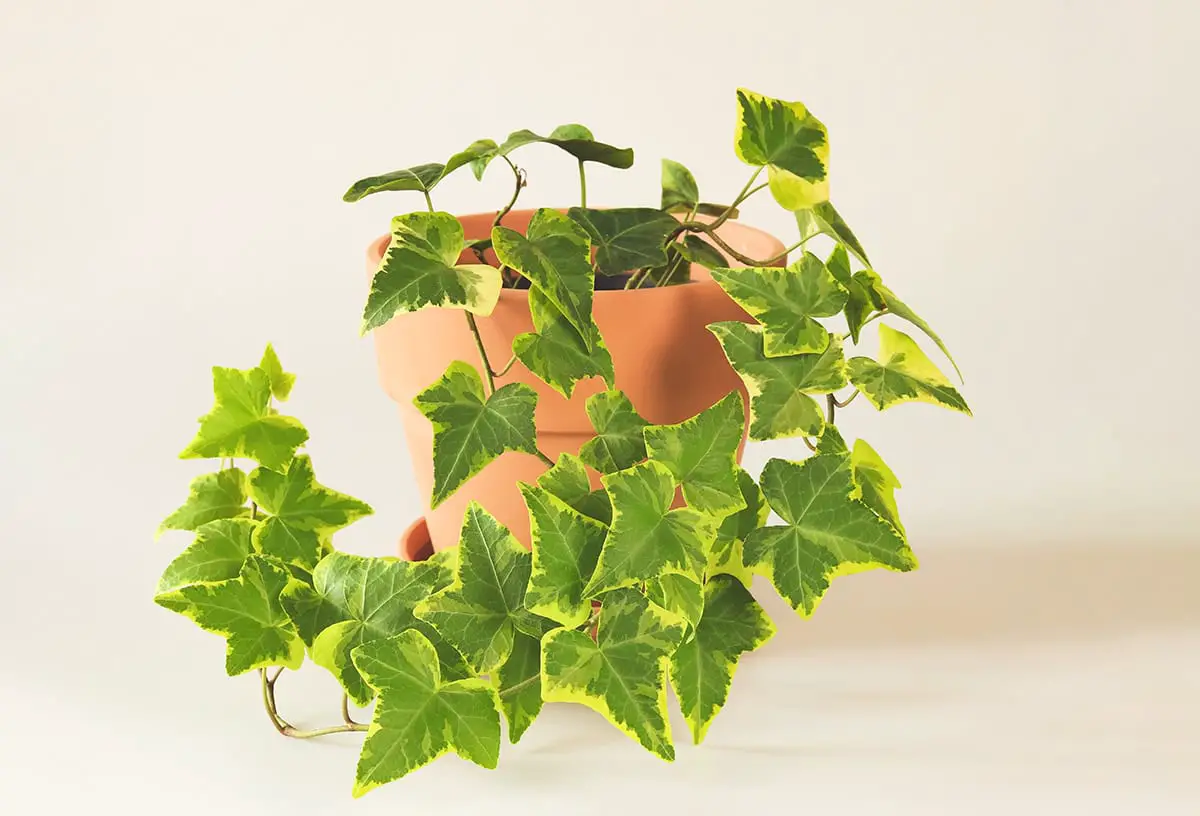You recently added an ivy plant to your home because of its elegant, trailing vines. Now, you’re looking for the best way to keep it healthy and lush. Caring for ivy plants is simple with the right knowledge. Learn how to ensure your ivy thrives and enhances your living space with its timeless beauty.
| Common Name | Ivy |
| Botanical Name | Hedera helix |
| Family | Araliaceae |
| History & Origin | Native to Europe and Western Asia |
| Plant Type | Evergreen climbing vine |
| Mature Size | 6-8 inches tall, spreads 15 feet |
| Sun Exposure | Bright, indirect light |
| Soil Type | Well-draining potting mix |
| Soil pH | 6.0-7.8 |
| Temperature | 60-75°F |
| Watering | Keep soil moist, not waterlogged |
| Fertilizing | Monthly during growing season |
| Bloom Time | Rarely blooms indoors |
| Flower Color | Greenish-white |
| Hardiness Zone | 4-9 USDA |
| Toxicity | Toxic to pets and humans if ingested |
| Common Problems | Spider mites, aphids, root rot |
Table of Contents
Light
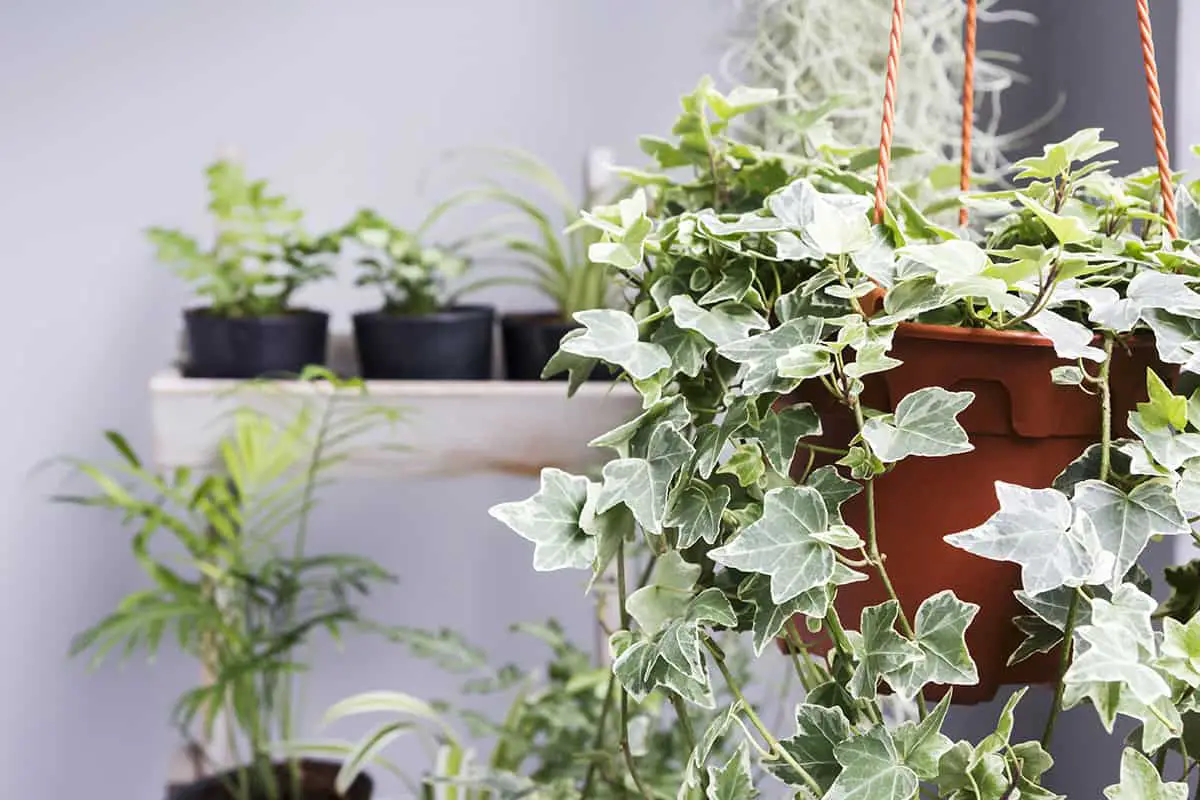
Ideally, place your ivy in an area with bright, indirect light. Too much direct light may cause the leaves to turn yellow or even brown. In contrast, low light may result in sparse foliage and slow growth. If you’re unsure about the light conditions, it’s better to err on the side of slightly lower light, as ivies are quite adaptable.
You may need to adjust the light exposure during different seasons. A spot near an east or west-facing window should work well throughout the year. If you have concerns about the intensity of the light, use sheer curtains to filter sunlight and protect the plant.
Make sure to regularly rotate your ivy plant to ensure even light exposure. This helps maintain symmetry, encourages balanced growth, and prevents the plant from leaning towards the light source.
Soil
Use a well-draining potting soil that retains moisture without becoming waterlogged. A mix of equal parts peat moss, perlite, and potting soil is ideal.
When repotting your ivy, never use a pot that is more than 1 inch larger in diameter than the previous one. If the pot is too large, the soil can stay wet for too long, causing root rot. Always make sure the new pot has drainage holes at the bottom.
Ivy plants thrive in a soil pH of 6.0 to 7.0, which is slightly acidic to neutral. You can test the soil’s pH using a soil test kit or a pH probe. If necessary, adjust the pH by adding lime or sulfur, depending on whether the soil is too acidic or too alkaline.
Maintain the soil’s health by providing your ivy with adequate water, nutrients, and air circulation. Keep the soil consistently moist, but never soggy. Overwatering can contribute to root rot, while underwatering may cause leaves to become pale and wilted. Stick your finger about an inch into the soil; if it feels dry, it’s time to water your ivy.
Watering
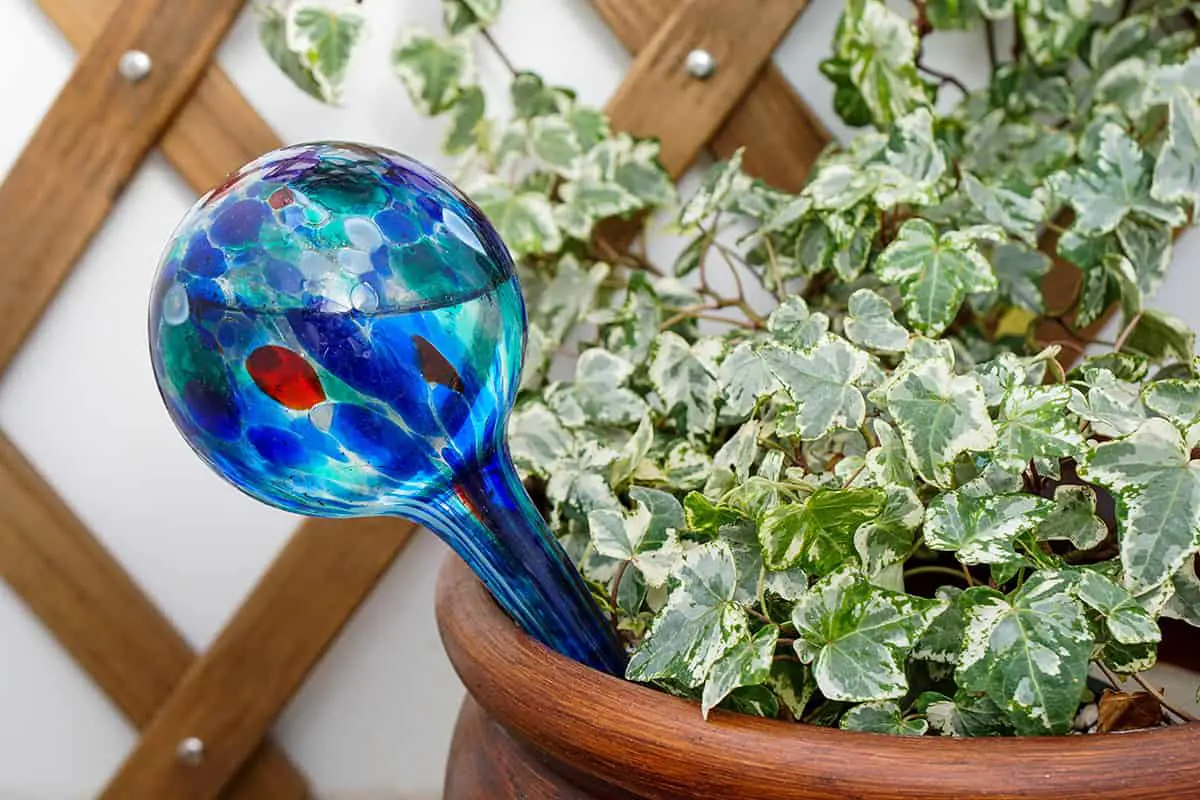
Your aim should be to maintain a balance between providing adequate water and preventing overwatering for your plants. Ivy plants require the soil to be moist, not soggy. To achieve this, allow the soil to dry slightly between waterings.
Watering frequency will vary based on factors such as the size of your container, light, and temperature. Typically, ivy plants need to be watered once a week in well-drained containers. Smaller containers or plants in brighter light may need water more frequently.
It’s important to use room temperature, dechlorinated water for your ivy plants. Cold water can shock the plant and chlorine can harm roots. So, let tap water sit overnight or use filtered water.
In addition to proper watering, it’s helpful to occasionally wash your ivy plant with lukewarm water. This prevents pest problems and keeps the leaves clean. You can simply place the leaves and stems under running water, holding your hand over the soil to avoid overwatering. Perform this task once a week.
Temperature and Humidity
Ivy plants thrive in a temperature range of 50 to 70 °F during the day and 5 to 10 °F lower at night. Ensure your plant’s environment maintains this range for optimal growth. While day temperatures of 70° to 80°F are generally suitable for most indoor plants, ivy plants benefit from slightly cooler conditions.
Keep your ivy plants in areas with good air circulation, as it helps them stay healthy. When choosing a location, make sure it’s not too crowded, ensuring ample air movement. Apart from temperature, humidity plays a crucial role in the health of your ivy plant.
A relative humidity level of 40 – 50% is ideal for maintaining your ivy plant. Be cautious of humidity levels below 20%, as low humidity can lead to growth issues. To increase humidity, consider using a humidifier. Alternatively, you can mist the plant with water or place it in a tray filled with pebbles and water, ensuring the plant pot doesn’t touch the water directly.
Fertilizer
It’s vital to use a foliage houseplant fertilizer when your ivy is actively growing. In general, it’s best to fertilize once a month during the growing season.
Choose a fertilizer that contains the three essential macronutrients: nitrogen, phosphorus, and potassium. These nutrients play a vital role in your ivy’s overall health and well-being. You can find various N, P, and K combinations, such as 16-16-16, 5-10-10, or 4-6-6, in dry, liquid, or slow-release forms.
When fertilizing your ivy plant, always follow the label directions. Be careful not to over-fertilize, as it can cause more harm than good. Excess nutrients can damage the plant and lead to poor growth or even death. Keep in mind that your ivy will require less fertilizer during hot summer months or when temperatures are cool.
Propagation
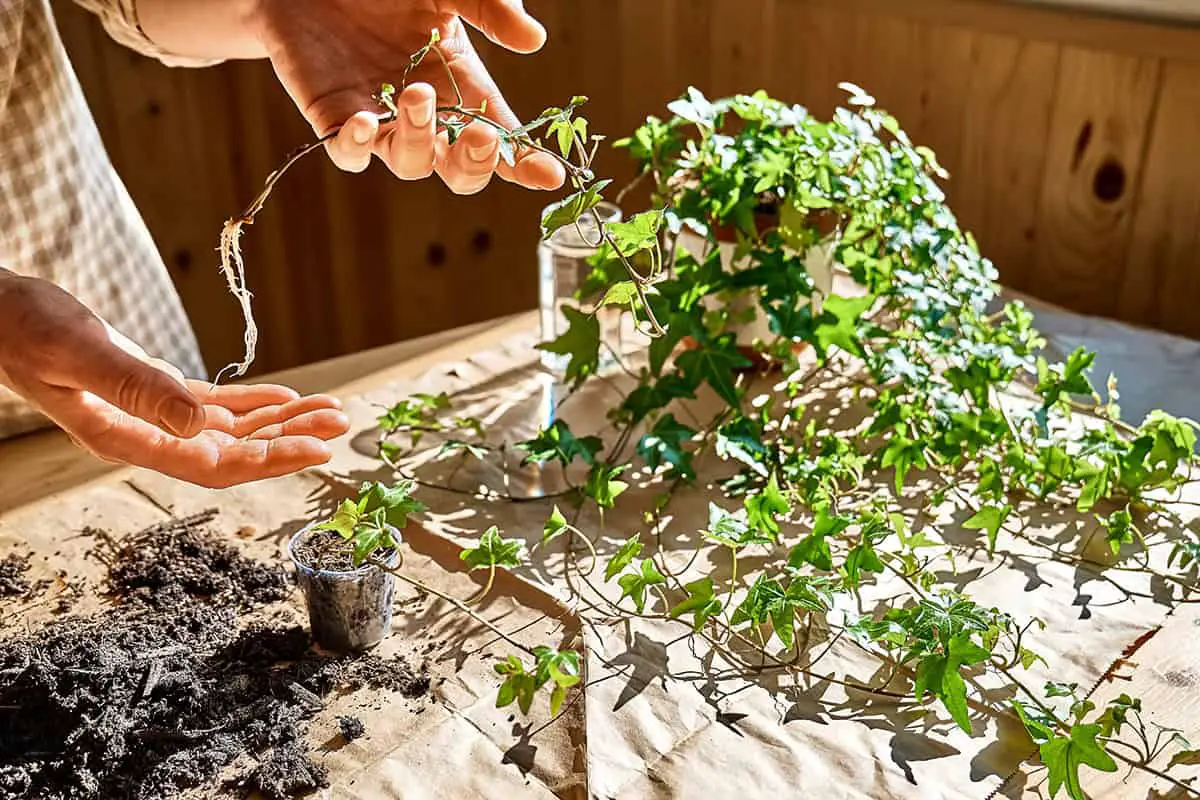
Ivy plants, such as the English ivy, can be propagated easily through stem cuttings. You can start by using a sharp knife to cut off 4- to 5-inch-long shoots. Remember to pinch off the leaves on the bottom part of the cuttings. This is an essential step in the process as it prepares the cutting for new root growth.
Next, it is important to dip the cut ends in a rooting hormone. This promotes root development and significantly increases the chances of successful propagation. After applying the rooting hormone, insert the bottom 1 to 1½ inches of the cutting into a perlite or coarse sand rooting medium.
During the early stages of growth, make sure to keep the rooting medium consistently moist. You can place a plastic cover over the cuttings to maintain humidity, but make sure to provide sufficient ventilation as well. The optimal temperature for rooting ivy cuttings is between 65°F and 75°F. After a few weeks, the cuttings should develop roots and be ready for transplanting into pots or your garden.
Pruning
Pruning is essential in maintaining the health and shape of your ivy plant. Timely trimming encourages bushier growth and prevents the plant from becoming leggy and unruly. In this section, you will learn how to prune ivy plants effectively.
Before starting, ensure you have the proper tools. Hand pruners are ideal for branches up to 3/4-inch in diameter. There are two blade styles: scissor-action and anvil-action pruners. Scissor-action pruners glide against a fixed blade, while anvil-action pruners have a sharpened blade that cuts against a flat surface or anvil.
Begin by assessing your ivy plant for dead, damaged, or excessively long stems. Focus on removing these first to improve the overall health of the plant. You can also trim back any stems that have grown too far outside the desired shape of your ivy.
Next, concentrate on cutting back sections that have grown tangled or dense. It’s essential to maintain a balance within the plant to ensure proper air circulation and light penetration.
Lastly, don’t be afraid to cut back your ivy aggressively as needed. Ivy plants can withstand heavy pruning and will bounce back quickly. Regular pruning, about two to three times a year, will help maintain the ideal shape and size for your ivy plant.
Potting and Repotting
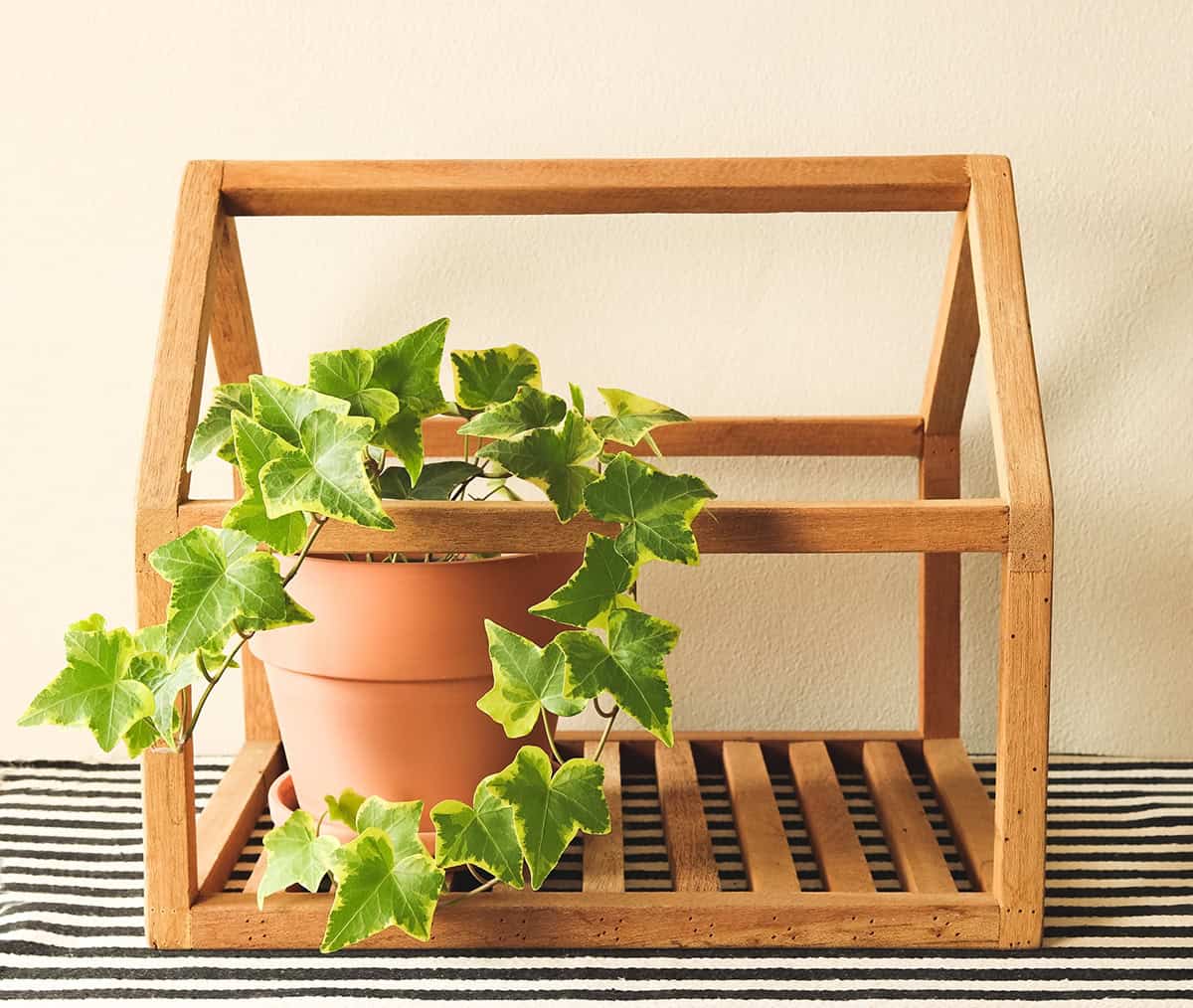
When potting your ivy plants, use a regular potting mix to ensure proper growth. Make sure the soil remains moist and provide bright light, cool temperatures, and low to medium humidity for optimal growth.
Choose a pot that is only 1 inch larger in diameter than the original pot, as using too large a pot can cause the soil to stay wet too long, leading to root rot. Place a shard over the drainage hole to prevent soil leakage and fill the bottom with enough potting mix to raise the root ball to an inch or two below the pot’s rim. This allows enough headroom for watering.
When repotting, water the plant in its original container and wait for an hour before beginning the process. If the container was used previously, ensure that it is clean before you start. Use a homemade potting media or a store-bought mix for best results.
Ivy plants can also be trained to form topiaries by planting small-leafed ivy cultivars at the base of a sphagnum moss-stuffed wire frame. Keep the plants trained and pinned to the frame, enabling them to grow into the desired shape.
Common Problems & Troubleshooting
Recognizing potential issues with your ivy plant is essential for proper care. You might encounter problems such as off-colored leaves, and small, stunted, or misshapen leaves. These can indicate a nutrient or pest issue. To help you troubleshoot these common issues, we’ve compiled a brief guide on identifying and addressing them.
Off-colored leaves often result from inadequate nutrients, insect damage, or improper watering. To remedy this, inspect your plant for pests and ensure you are providing the right amount of water and nutrients. Adjust your care regimen accordingly to restore your ivy’s vibrant color.
Meanwhile, stunted or misshapen leaves may be caused by pest problems, nutrient deficiencies, or improper care. Again, start by checking for pests and assessing your plant’s watering and nutrition needs. Modify your care routine if needed, and consider incorporating a standard plant food to help your ivy flourish.
Invasive growth can be a concern, as ivy plants are known for their rapid spread. To manage this issue, regularly trim and maintain your plant to prevent it from taking over. Controlling where your ivy grows can help preserve the integrity of your garden and maintain a healthy ecosystem.
Another issue to watch out for is excess humidity, which might lead to problems like root rot. Ensuring proper drainage and airflow can help prevent this problem.
Ivy Plant Varieties
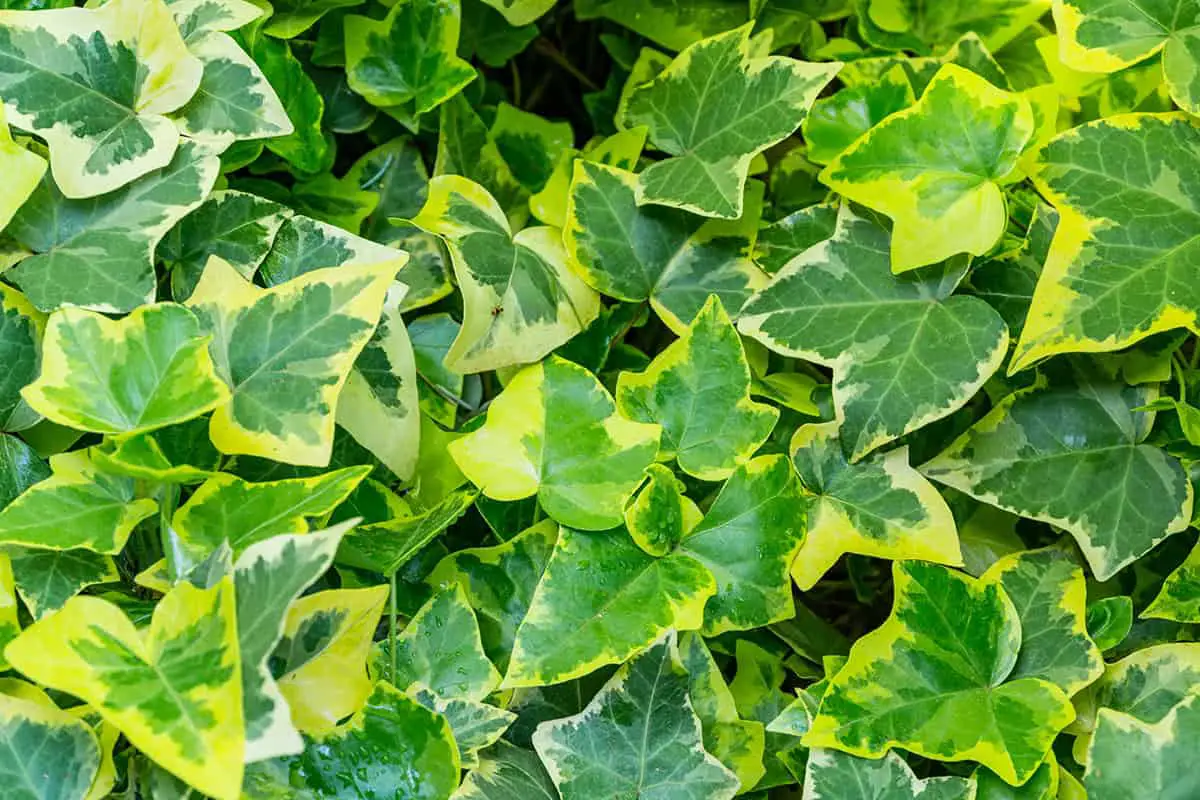
English Ivy (Hedera helix) is a popular type of ivy plant that you can grow both indoors and outdoors. Growing English Ivy indoors can be easy, as it’s a versatile houseplant that adapts to different situations. People often train it on trellis frames or wire topiary forms, creating elegant shapes for your home or garden.
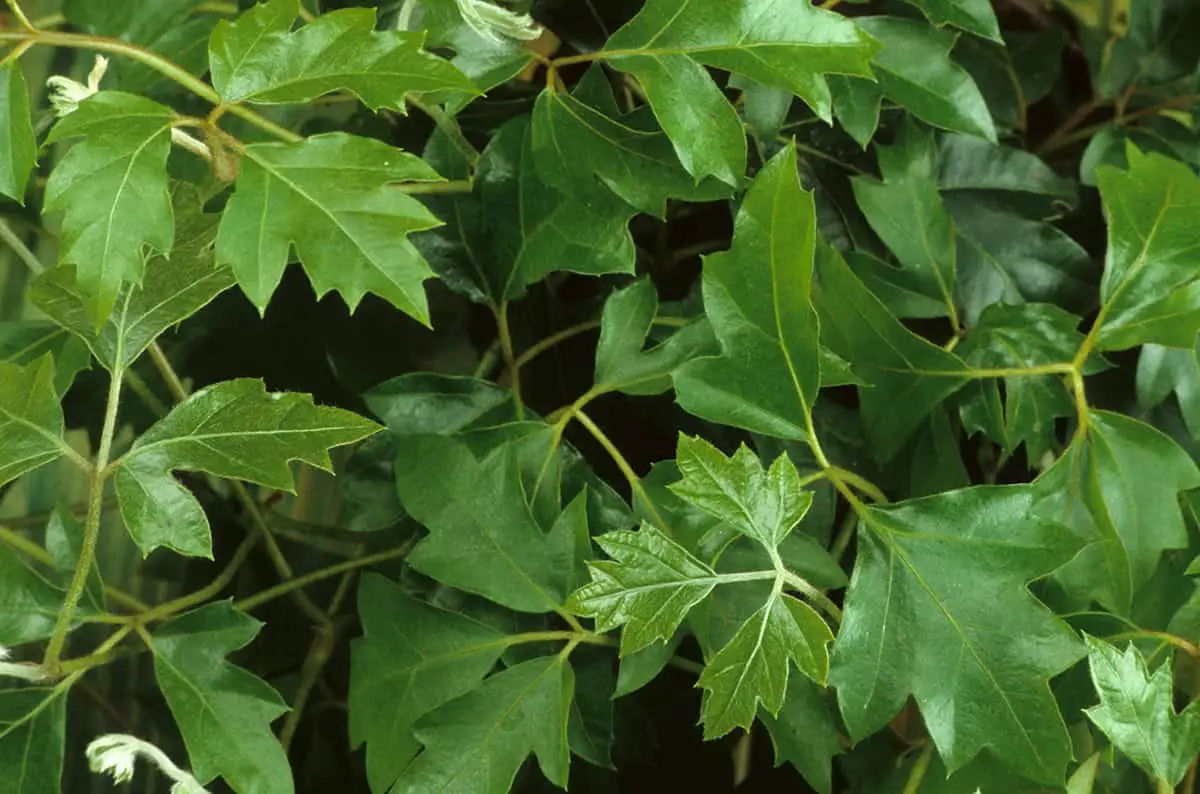
Another variety is the Grape Ivy (Cissus alata), which is known for its attractive, trailing vines. Grape Ivy plants tolerate a variety of lighting conditions, making them suitable options for growing indoors. Just keep in mind, that these plants prefer temperatures above 50°F and consistent moisture.
When considering ivy for outdoor landscaping, remember to keep the invasive nature of some varieties in mind. English Ivy is a non-native woody, perennial vine that is often used as a ground cover. However, it can spread from seeds or vegetative means, which may result in an overwhelming ivy takeover.
